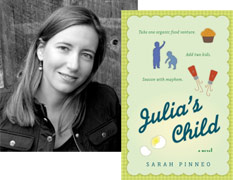I'm one of those nerds who find distribution channels fascinating. (I know. But everyone needs a hobby.) It used to be that when we talked about sale links on websites, it was a straightforward conversation about two e-book sellers and a thoughtful list of paper vendors.
When I put sell links on my website in 2012, it looked like this:
But times, they are a-changin.' Fast.
A few years ago, at the beginning of the e-book boom, Amazon frequently made up 2/3 or 3/4 of everyone's e-sales. But to listen to the chatter of successful indie authors these days (because they're the ones with the tools to actually understand where their own books are actually sold) is to get quite a different picture. Suddenly, sales at Apple iTunes are approaching the sales levels at Amazon for many titles. Nook seems to be ebbing. Kobo is still a decent venue for some authors. Their aggressive couponing in recent months means that some of the most diehard e-book buyers are purchasing there.
And there are even more little channels that authors may not have come across. Yet. Google Play is beginning to tick up in volume. Services like Oyster and the subscription service at ScribD are beginning to (slowly) ring the cash register for a few authors.
So what's a busy author to do with all of these?
Hybrid author (she is both traditionally and self published) Marie Force has the following buy links for one of her recent e-books on her website.
And those are just her domestic e-book links. She's careful to link to other countries' primary e-book markets.
Yes, this all takes time. But if you've spent many hours of your life writing a good book, it's worth the extra fiddling to make sure that A) it's available in multiple markets and B) you know how to find it.
Happy linking!

Sarah Pinneo is a novelist, food writer and book publicity specialist. Her most recent book is Julia’s Child. Follow her on twitter at @SarahPinneo.


No comments:
Post a Comment